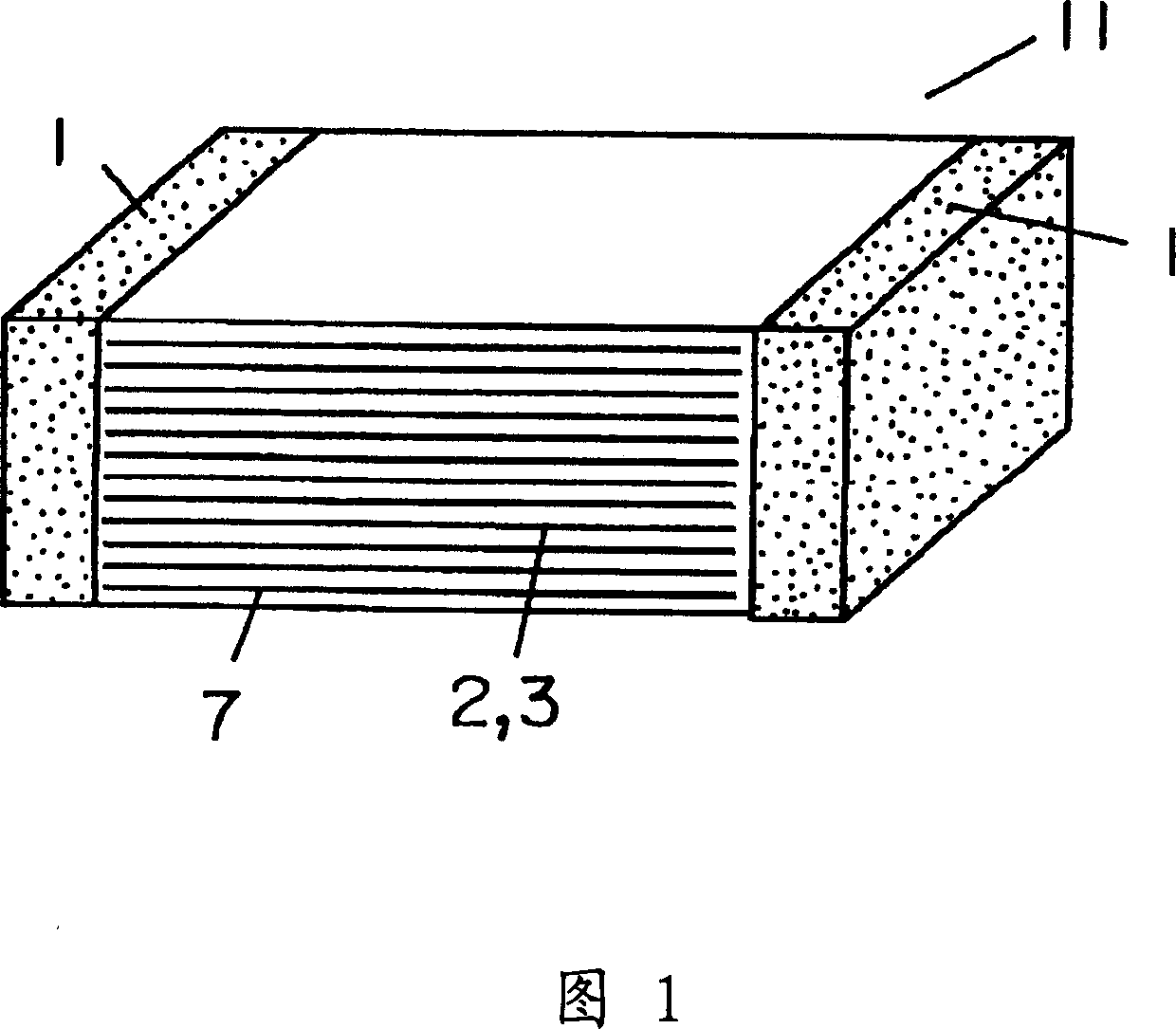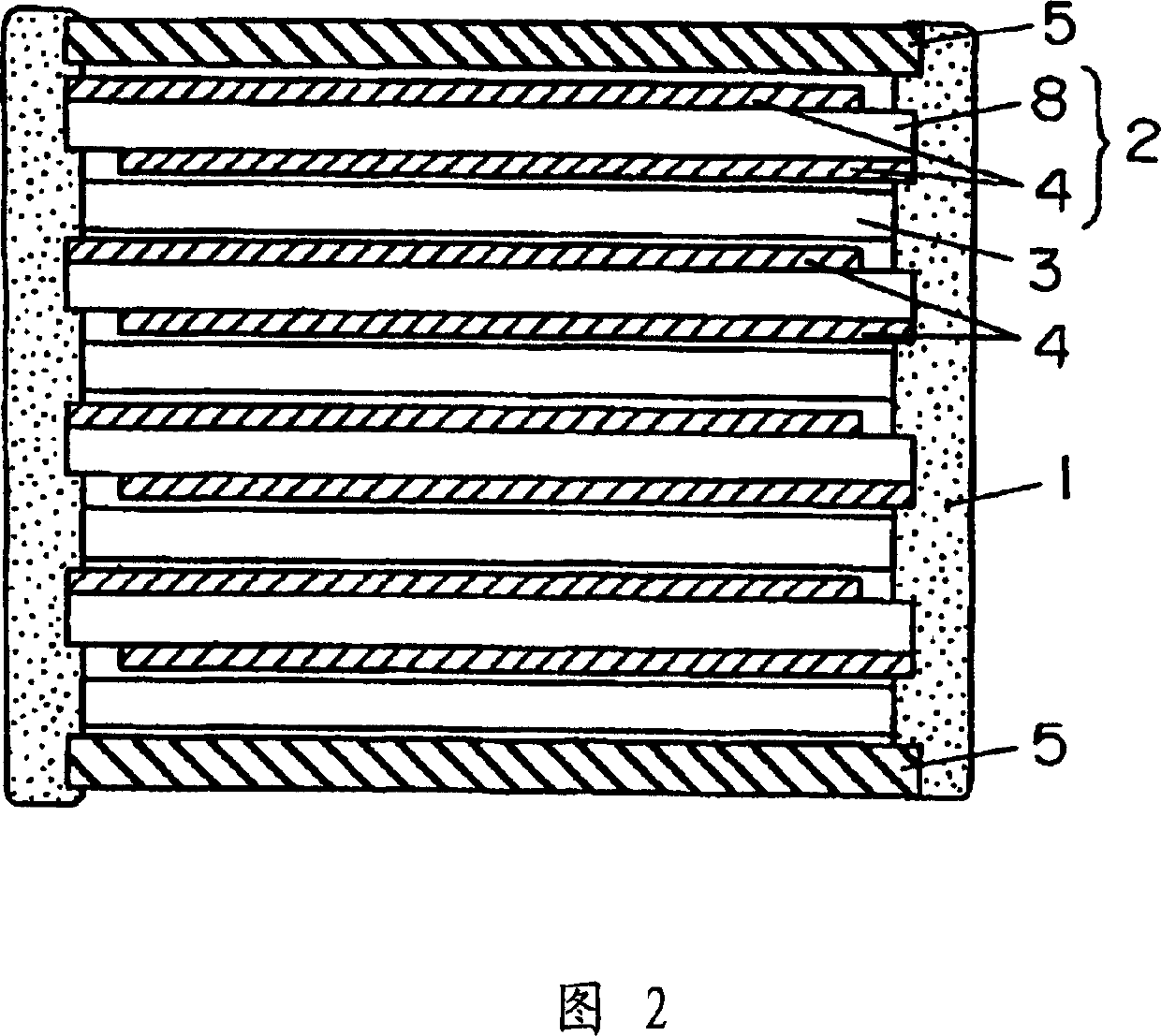Multilayer fim capacitor and prodn. method thereof
A technology for film capacitors and a manufacturing method, which is applied in the directions of multilayer capacitors, capacitors, wire wound capacitors, etc., can solve the problem of inability to ensure the insulation withstand voltage of the cut surface, and achieve the effects of excellent productivity and high reliability.
- Summary
- Abstract
- Description
- Claims
- Application Information
AI Technical Summary
Problems solved by technology
Method used
Image
Examples
Embodiment 1
[0061] Table 1 shows the tan δ (@1kHz) of the capacitor of Example 1, the AC breakdown voltage during the withstand voltage test, and the capacitance reduction rate after the 2000-hour life test. The data in Table 1 is the average value of 5 samples. In Table 1, the breakdown voltage in the withstand voltage test is the voltage at which the capacitance reduction rate becomes 20%. The capacitance reduction rate after the life test was evaluated by measuring the capacitance of the capacitor at room temperature after applying an alternating current (AC) 550V at 60Hz for 2000 hours in a high-temperature bath at 70°C for 2000 hours.
[0062] tanδ(%)
Embodiment 2
[0064] In Example 2, copper core zinc (zinc evaporated with copper as the center) was used instead of the alloy of aluminum and zinc in Example 1 on the vapor-deposited metal of the metallized vapor-deposited polypropylene film on both sides. The metal deposited on the polypropylene film contained 99.2% by weight of zinc and 0.8% by weight of copper.
[0065] In Example 2, a laminated film capacitor was manufactured in the same manner as in Example 1 from Step 1 to Step 6, except that the metal material was vapor-deposited.
[0066] In Example 2, similarly to Example 1, it was confirmed by an optical microscope that the vapor-deposited metal was removed uniformly in the range of 0.09 mm from the cut surface.
[0067] Table 1 shows the capacitor tan δ (@1kHz) produced in Example 2, the breakdown voltage during the withstand voltage test, and the capacitance reduction rate after the 2000-hour life test.
Embodiment 3
[0069] In Example 3, the same method as in Step 1 to Step 4 in Example 1 was used to fabricate a laminated film capacitor. In addition, in step 5, the cut surface of the capacitor element is irradiated with a pulsed laser manufactured by Nippon Laser Systems Co., Ltd., and the metal exposed on the cut surface and the vapor-deposited metal on the film surface near the cut surface are removed. The laser wavelength is 1.06 μm, and the spot diameter is 0.5 mm.
[0070] The irradiation parameters of the laser are as follows: the pulse width is 200ns, the frequency is 3kHz, and the peak power energy density of one pulse is 60kW / mm 2 . The product of pulse width and frequency (duty cycle) is 6×10 -4 . Since the laser beam is scanned by a galvano mirror, the entire cut surface is irradiated. At this time, the scanning speed of the laser is 600 mm / sec, and the scanning lines are moved at intervals of 0.3 mm.
[0071] In Example 3, similarly to Example 1, it was confirmed by an opt...
PUM
 Login to View More
Login to View More Abstract
Description
Claims
Application Information
 Login to View More
Login to View More - R&D
- Intellectual Property
- Life Sciences
- Materials
- Tech Scout
- Unparalleled Data Quality
- Higher Quality Content
- 60% Fewer Hallucinations
Browse by: Latest US Patents, China's latest patents, Technical Efficacy Thesaurus, Application Domain, Technology Topic, Popular Technical Reports.
© 2025 PatSnap. All rights reserved.Legal|Privacy policy|Modern Slavery Act Transparency Statement|Sitemap|About US| Contact US: help@patsnap.com



